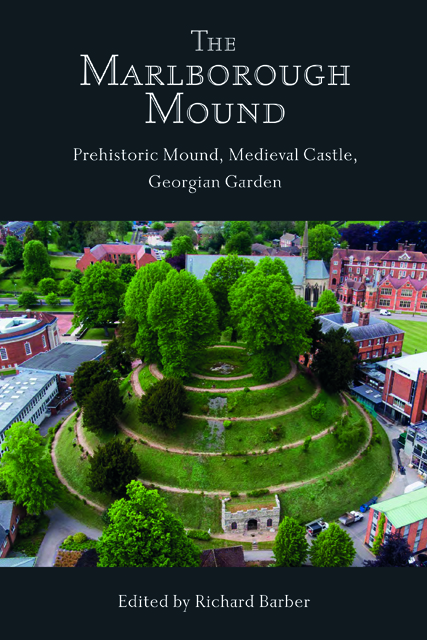Book contents
- Frontmatter
- Contents
- List of Figures
- Acknowledgements
- Preface
- 1 ‘One remarkable earthen-work’: The Neolithic Origins of the Marlborough Mound
- Afterword: The Round Mounds Project
- 2 Castles and the Landscape of Norman Wessex, c. 1066–1154
- 3 Marlborough Castle in the Middle Ages
- 4 The Mound as a Garden Feature
- Epilogue: The Marlborough Mound Trust
- A Inquisition into the State of Marlborough Castle, 11 September 1327
- B Castellum Merlebergensis, by H. C. Brentnall, F.S.A.
- C Constables of Marlborough Castle
- D Marlborough Castle: Archaeological Findings for the Medieval Period
- Bibliography
- Notes
- Contributors
- Index
3 - Marlborough Castle in the Middle Ages
Published online by Cambridge University Press: 11 January 2023
- Frontmatter
- Contents
- List of Figures
- Acknowledgements
- Preface
- 1 ‘One remarkable earthen-work’: The Neolithic Origins of the Marlborough Mound
- Afterword: The Round Mounds Project
- 2 Castles and the Landscape of Norman Wessex, c. 1066–1154
- 3 Marlborough Castle in the Middle Ages
- 4 The Mound as a Garden Feature
- Epilogue: The Marlborough Mound Trust
- A Inquisition into the State of Marlborough Castle, 11 September 1327
- B Castellum Merlebergensis, by H. C. Brentnall, F.S.A.
- C Constables of Marlborough Castle
- D Marlborough Castle: Archaeological Findings for the Medieval Period
- Bibliography
- Notes
- Contributors
- Index
Summary
We now change focus from the broad context of the castles in the landscape of Wessex to the specific case of Marlborough. Where does Marlborough stand in the hierarchy of royal residences, and what features does it share with other contemporary royal castles? Was it militarily effective or simply for show? How frequently was it used by the kings? And how did it evolve between its creation in the eleventh century and the beginning of its decay in the late fourteenth century?
The recent discovery that the mounds at Marlborough and Silbury are almost twins is a contrast to their appearances today. Silbury rises out of its solitary valley, sharply outlined against the surrounding landscape, while Marlborough is hemmed in by buildings, and until recently was almost entirely masked by trees. Yet until the Norman Conquest their histories were very similar. The Romans settled near Silbury, but the mound seems to have played no particular part in the life of the small village at its foot. At Marlborough likewise, the mound was simply a feature of the surroundings for the small borough which had grown up next to it by the eleventh century, at the centre of a small royal estate.
After 1066, Silbury remained undisturbed. In Domesday Book, Marlborough is not listed among the towns held by the king, though one-third of the taxes raised there were paid to the royal exchequer. This implies that it may have been a fief, rather than being held directly by the king, though it is not among the fiefs listed for Wiltshire. The charter in 1204 by which King John granted the growing settlement at Marlborough the right to hold markets twice weekly, and an annual fair at the end of August, is addressed to the ‘borough and burgesses of Marlborough’. It also details the right of the borough to jurisdiction and liberties similar to that of towns such as Winchester and Oxford. The borough had become an independent, if ill-defined, entity, and the ‘men of Marlborough’ paid an annual fee to the treasury. What is certain is that the status and wealth of the town in the thirteenth century was closely linked to the development of the castle.
- Type
- Chapter
- Information
- The Marlborough MoundPrehistoric Mound, Medieval Castle, Georgian Garden, pp. 55 - 108Publisher: Boydell & BrewerPrint publication year: 2022



